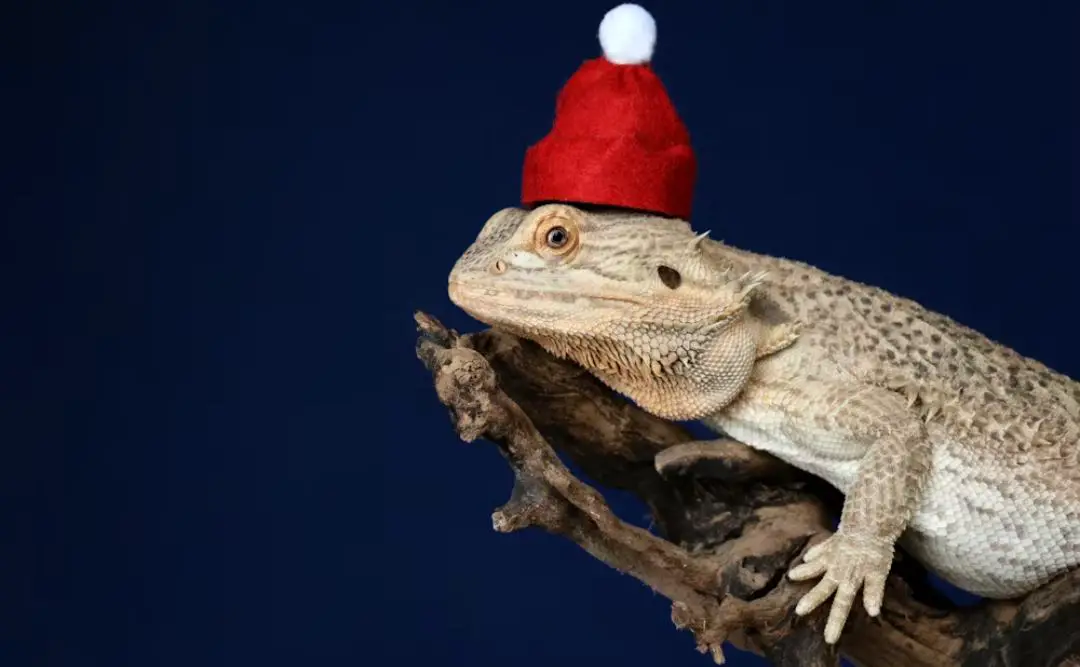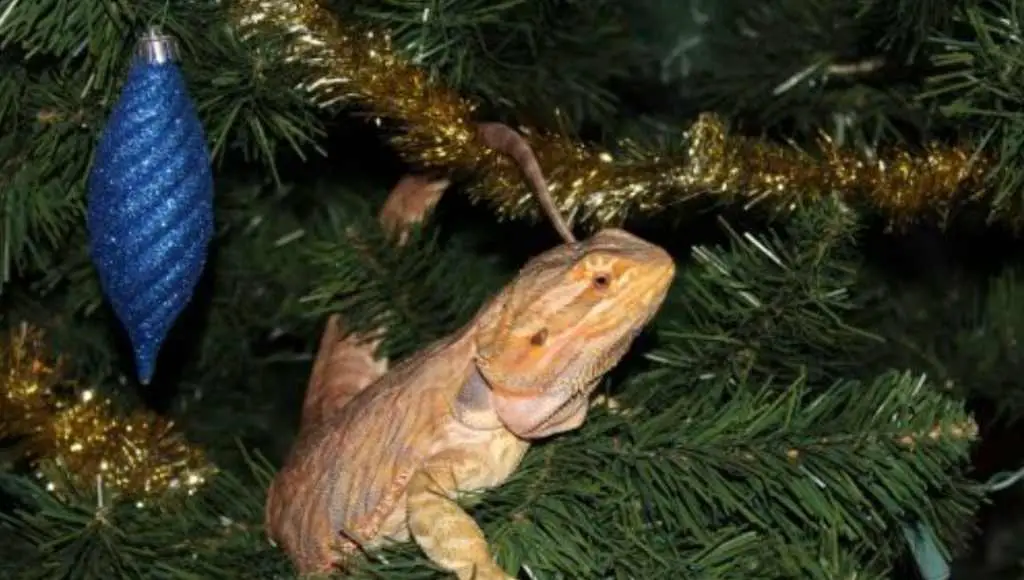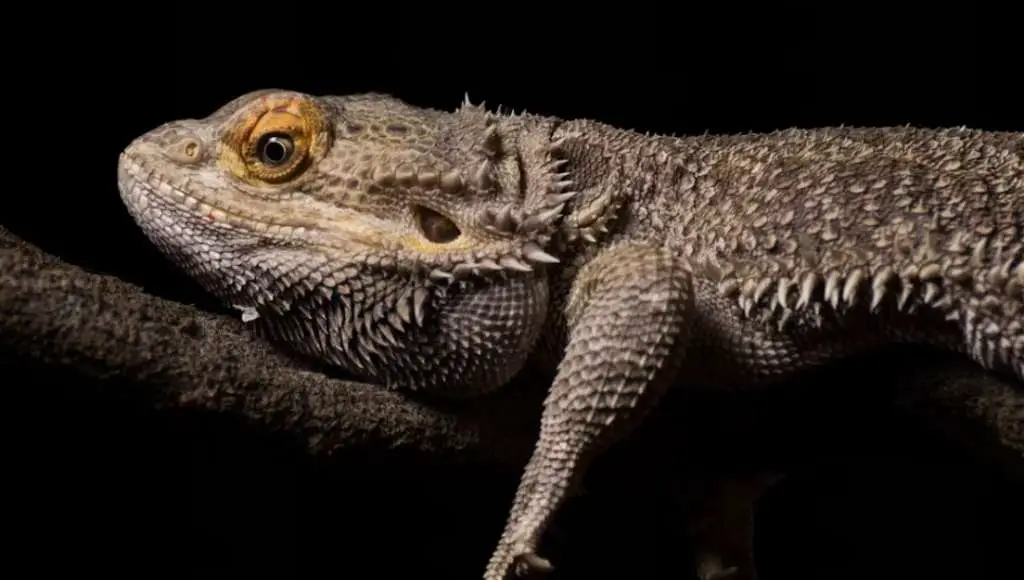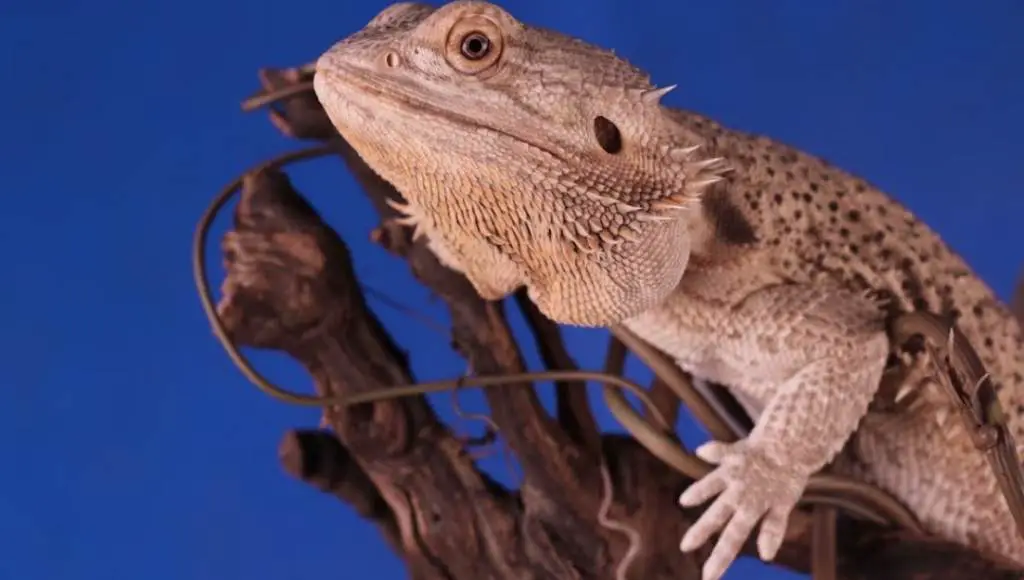20 Top Bearded Dragon Likes and Dislikes

Are you curious about what makes our scaly friends, the bearded dragons, tick?
Well, buckle up because today we’re diving into their likes and dislikes.
From their favorite basking spots to their not-so-favorite foods, we’ll uncover the quirks and preferences of these fascinating reptiles.
Let’s get ready to decode the bearded dragon’s world together!
Bearded Dragon Likes and Dislikes
Bearded dragons are known to have unique preferences when it comes to their likes and dislikes.
These fascinating reptiles enjoy basking in warm temperatures, as it helps them regulate their body temperature.
They relish a varied diet consisting of leafy greens, vegetables, and insects.
Bearded dragons also appreciate a spacious and well-decorated enclosure, with hiding spots and branches to climb on.
However, they dislike sudden loud noises and excessive handling, as they prefer a calm and quiet environment.
Lastly, bearded dragons may not be fond of certain food items like citrus fruits, spinach, and iceberg lettuce, which can cause digestive issues for them.
Let’s break it down further…
Bearded Dragon Likes

Here are some of the most common things that bearded dragon likes:
1. Basking in the Sun
Ah, the sun! Bearded dragons are sun worshipers just like some humans.
They simply adore basking in the warm rays of the sun. It’s not just about soaking up some heat; it’s a vital part of their natural behavior.
The sun provides them with essential ultraviolet (UV) light, which helps them produce vitamin D3 and absorb calcium.
So, when you see your bearded dragon stretching out under a heat lamp or soaking up the sunlight in their enclosure, they’re enjoying a little slice of lizard paradise.
2. Warm Enclosures
Bearded dragons are native to the arid regions of Australia, so they thrive in warm environments.
Maintaining a toasty and cozy enclosure is crucial for their overall well-being.
They prefer temperatures ranging from 95 to 105 degrees Fahrenheit (35 to 40 degrees Celsius) in their basking spot, while the cooler side of the enclosure should be around 75 to 85 degrees Fahrenheit (24 to 29 degrees Celsius).
Providing them with a warm and comfortable living space helps keep them happy and healthy.
3. Live Insects
Now, let’s talk about food! Bearded dragons are insectivores, which means they primarily eat insects and other invertebrates.
They absolutely love chasing down and munching on live insects. Crickets, mealworms, dubia roaches, and phoenix worms are some popular choices.
Not only does this provide them with essential nutrients, but it also satisfies their natural hunting instincts.
Just imagine the excitement on their little faces when they spot a tasty cricket wiggling in front of them!
4. Leafy Greens and Vegetables
While insects are a big part of their diet, bearded dragons also enjoy a variety of leafy greens and vegetables.
These provide them with vital vitamins and fiber. Some favorites include collard greens, mustard greens, kale, dandelion greens, and squash.
It’s important to offer a diverse menu to ensure they get a balanced diet.
Plus, watching them munch on their leafy greens can be quite entertaining, as they often make a mess and wear their food with pride.
5. Climbing and Exploring
Bearded Dragons are natural climbers and curious creatures, so they thoroughly enjoy having opportunities to climb and explore their surroundings.
Providing them with an enriching habitat is essential. You can offer a variety of branches, rocks, and platforms at different heights to create a stimulating environment.
This allows them to exercise their natural behaviors, promotes muscle development, and keeps them mentally engaged.
Just make sure the climbing structures are stable and secure to ensure their safety.
Learn more about making your bearded dragon happy.
6. Variety in Diet
When it comes to food, Bearded Dragons appreciate a diverse and nutritious diet.
While their primary diet consists of insects like crickets, mealworms, and dubia roaches, they also enjoy a variety of leafy greens and vegetables.
By offering a wide range of foods, you provide them with essential nutrients and prevent dietary deficiencies.
Some popular greens include collard greens, kale, and dandelion greens.
Vegetables like bell peppers, squash, and carrots can also be included. Remember to chop the food into smaller, manageable pieces for easy consumption.
7. Proper Lighting
Bearded Dragons are ectothermic reptiles, meaning they rely on external heat sources to regulate their body temperature.
Adequate lighting is crucial for their overall health and well-being. They require both UVB and UVA light.
UVB light helps them synthesize vitamin D3, which aids in calcium absorption and prevents metabolic bone disease.
UVA light, on the other hand, promotes natural behaviors and enhances their mood.
Make sure to provide a UVB bulb specifically designed for reptiles and place it within the recommended distance from their basking spot.
8. Scheduled Feeding Times
Establishing a regular feeding schedule is beneficial for Bearded Dragons.
They thrive on routine, and having set feeding times helps them anticipate and prepare for their meals.
Aim for two to three feedings per day for juveniles and one to two feedings for adults.
Offering food around the same time each day aids in digestion and prevents overfeeding.
It also allows you to monitor their appetite and ensure they are receiving the right amount of nutrition.
9. Clean Environment
Maintaining a clean and hygienic habitat is vital for the health of your Bearded Dragon.
Regular cleaning of their enclosure helps prevent the buildup of bacteria and parasites.
Remove feces and uneaten food promptly to avoid contamination. Spot clean soiled areas daily and perform a thorough cleaning of the entire enclosure on a regular basis.
Use a reptile-safe disinfectant to sanitize the habitat. Additionally, ensure that the substrate you use is easy to clean and doesn’t pose a risk of ingestion.
10. Hiding Places
Last but not least, bearded dragons appreciate having some cozy hiding places in their enclosure.
While they enjoy basking and exploring, they also need a safe spot where they can retreat and feel secure.
Providing them with some hiding spots like logs, caves, or even purpose-built reptile hides allows them to relax and take a break from the outside world. It’s like having their own little lizard sanctuary!
Remember, each Bearded Dragon has its own preferences and personality, so it’s essential to observe and interact with your pet to understand their individual likes and dislikes.
Learn more about bearded dragon myths.
Bearded Dragon Dislikes

Here are some of the most common things that bearded dragon dislikes:
1. Rough Handling
Bearded Dragons are generally not fond of rough handling. They prefer gentle and calm interactions.
When you handle them, it’s important to support their body and limbs properly.
Avoid squeezing or gripping them tightly, as it can cause stress and discomfort.
Treat them with care, similar to how you would handle delicate objects.
2. Loud Noises
Bearded Dragons have a keen sense of hearing, so loud noises can startle and stress them out.
Sudden loud sounds, such as blaring music or loud conversations, can make them feel anxious and uneasy.
It’s a good idea to create a peaceful environment for your pet, especially during their resting or sleeping times.
Minimizing loud noises can help them feel more secure and relaxed.
3. Grabbing their Bodies From Above
Bearded Dragons are naturally prey animals, and sudden movements from above can trigger their instinctual response to flee or defend themselves.
When you approach your Bearded Dragon, it’s best to do so from the front or the side, allowing them to see you coming.
This approach helps them feel more at ease and reduces the likelihood of them becoming stressed or scared.
4. Excessive Vibrations
Bearded Dragons are sensitive to vibrations, which can be unsettling for them.
Vibrations can occur from various sources like loud music, heavy footsteps, or appliances like vacuum cleaners.
Try to minimize or avoid exposing your Bearded Dragon to excessive vibrations, as they can disrupt their sense of security and lead to stress.
Providing a calm and stable environment will help them feel more comfortable.
5. Dirty Environment
Bearded Dragons are generally clean animals, and they appreciate a tidy living space.
A dirty environment can cause discomfort and stress for them. Regularly clean their enclosure, remove uneaten food, and replace their bedding to maintain hygiene.
Make sure their habitat offers a comfortable and clean area for basking, as this is crucial for their overall well-being.
6. Sudden movements
Picture yourself lounging around, minding your own business, when suddenly someone jumps out of nowhere and startles you.
Not fun, right? Well, bearded dragons can feel the same way about sudden movements.
They prefer a calm and predictable environment, so if you’re planning to interact with your scaly buddy, it’s best to approach them gently and avoid any sudden gestures that might startle them.
7. Bright lights
Bearded dragons are sun-loving creatures, and they need a good dose of UVB light to stay healthy.
However, excessively bright lights can be overwhelming for them. Imagine sitting in a room with blindingly bright spotlights shining in your face.
Not very pleasant, is it? Bearded dragons prefer a balanced lighting setup that mimics their natural habitat, with a basking spot and shaded areas to retreat to when they feel like chilling out.
8. Small spaces
Bearded dragons are not fans of feeling cramped and confined.
They like to have room to explore, stretch their legs, and bask in the warmth of their environment.
Just like humans, they appreciate their personal space.
Providing them with an adequately sized enclosure that allows them to move around comfortably is crucial for their well-being.
9. Cold temperatures
Bearded dragons are native to the warm regions of Australia, so they aren’t big fans of chilly weather.
They are ectothermic creatures, meaning they rely on external sources of heat to regulate their body temperature.
Cold temperatures can make them sluggish and can even lead to health issues.
It’s essential to provide them with a warm and cozy environment, including a basking spot where they can soak up some heat and regulate their body temperature.
10. Poor diet
Just like us, bearded dragons need a nutritious and well-balanced diet to thrive.
Feeding them a poor diet can lead to various health problems and make them quite unhappy.
They require a mix of insects, leafy greens, and even some fruits to meet their nutritional needs.
So, make sure you’re offering them a varied diet that includes appropriate insect prey and a good selection of greens to keep their taste buds satisfied and their bellies happy.
Remember, each bearded dragon has its own personality, so there might be some slight variations in their preferences.
It’s essential to observe and understand your scaly friend’s behavior to ensure their happiness and well-being.
FAQs

What do bearded dragons like to eat?
Bearded dragons are omnivorous, meaning they eat both insects and plants. They enjoy a diet consisting of leafy greens, such as collard greens and kale, along with a variety of insects like crickets and mealworms. It’s important to provide a balanced diet to ensure their nutritional needs are met.
Do bearded dragons like to be handled?
Some bearded dragons enjoy being handled and may become accustomed to it with time. However, it’s essential to handle them gently and with care. It’s also important to note that not all bearded dragons enjoy being held, as they have their unique personalities. Always observe their body language and respect their boundaries.
What type of habitat do bearded dragons prefer?
Bearded dragons are native to arid regions, so they thrive in a habitat that mimics their natural environment. A spacious enclosure with a basking area, UVB lighting, and a temperature gradient is ideal. They also appreciate having hiding spots, such as rocks or logs, to retreat to when they want privacy.
Do bearded dragons enjoy social interaction?
Bearded dragons are generally solitary creatures, so they don’t require constant social interaction. However, they can still enjoy spending time with their owners and being part of their daily routine. They may become accustomed to their owner’s presence and enjoy gentle interaction, such as hand-feeding or simply being in the same room.
What kind of temperature do bearded dragons like?
Bearded dragons are ectothermic, meaning they rely on external heat sources to regulate their body temperature. They require a basking spot with a temperature of around 95-105°F (35-40°C) to thermoregulate. The cooler end of their enclosure should be around 75-85°F (24-29°C). Providing a temperature gradient allows them to choose the ideal temperature for their needs.
Do bearded dragons like to be bathed?
Some bearded dragons enjoy bathing, while others may not have a preference. Bathing can help with shedding and hydration. When giving your bearded dragon a bath, make sure the water is lukewarm, around 85-90°F (29-32°C), and only fill it to a level where they can comfortably stand. Always supervise them during bath time and avoid using any soaps or chemicals that could harm them.
Learn more about identifying a happy bearded dragon.
Conclusion
In conclusion, understanding your bearded dragon’s likes and dislikes is key to providing them with a happy and healthy life. Remember to offer a varied diet, provide a comfortable environment with proper lighting and temperature, and spend quality time interacting with your scaly friend. By catering to their preferences and needs, you’ll establish a strong bond and ensure a lifetime of joy with your bearded dragon companion.
